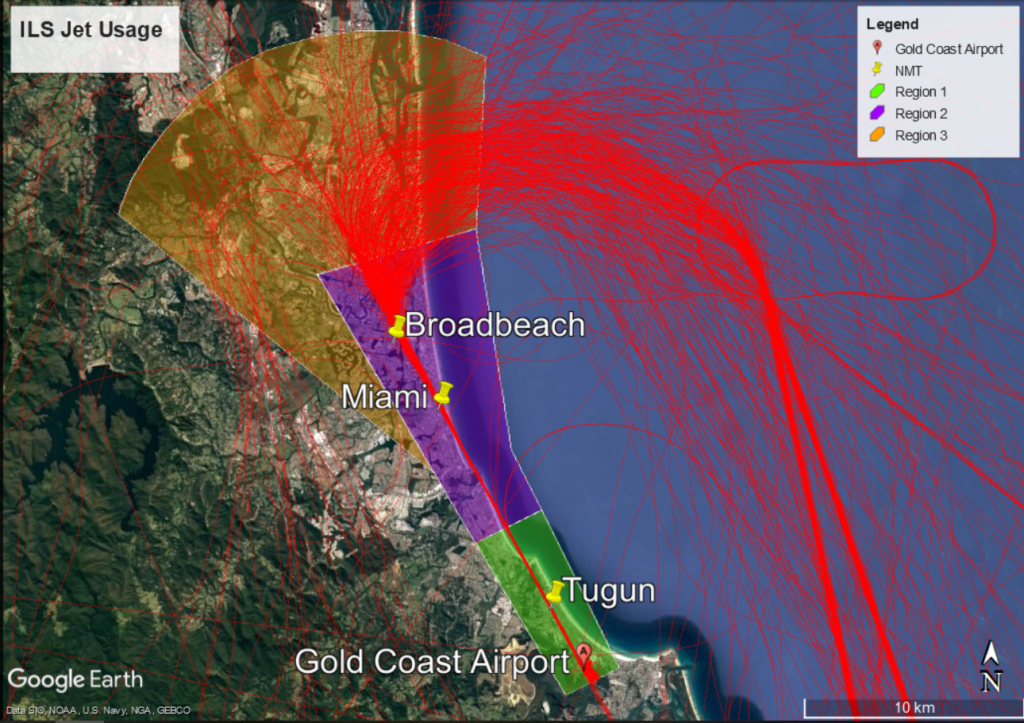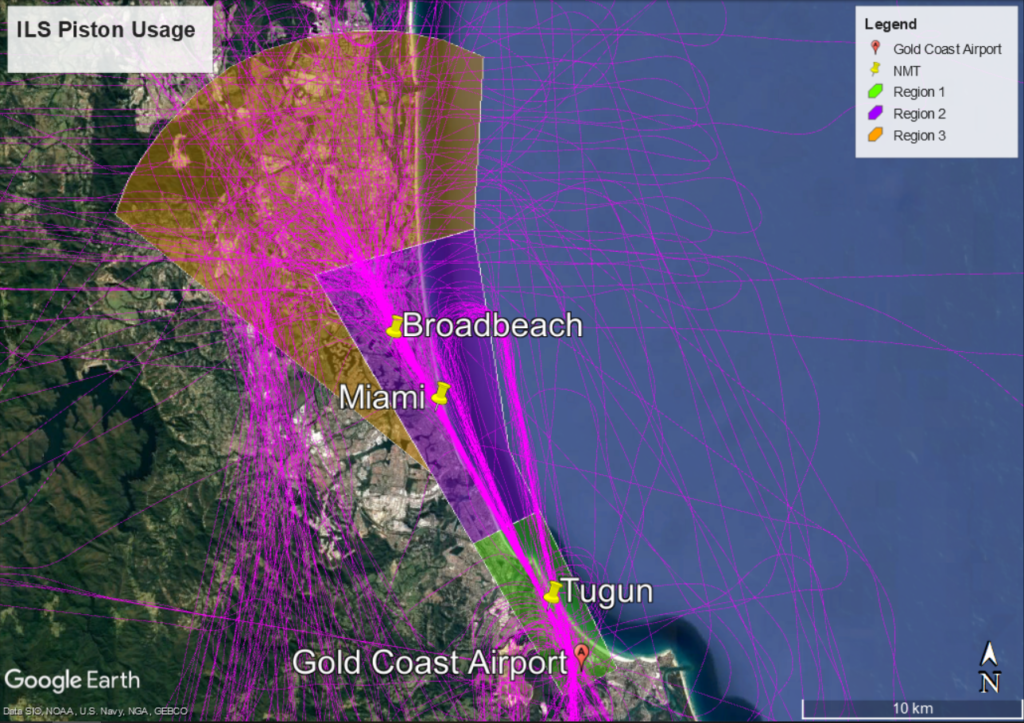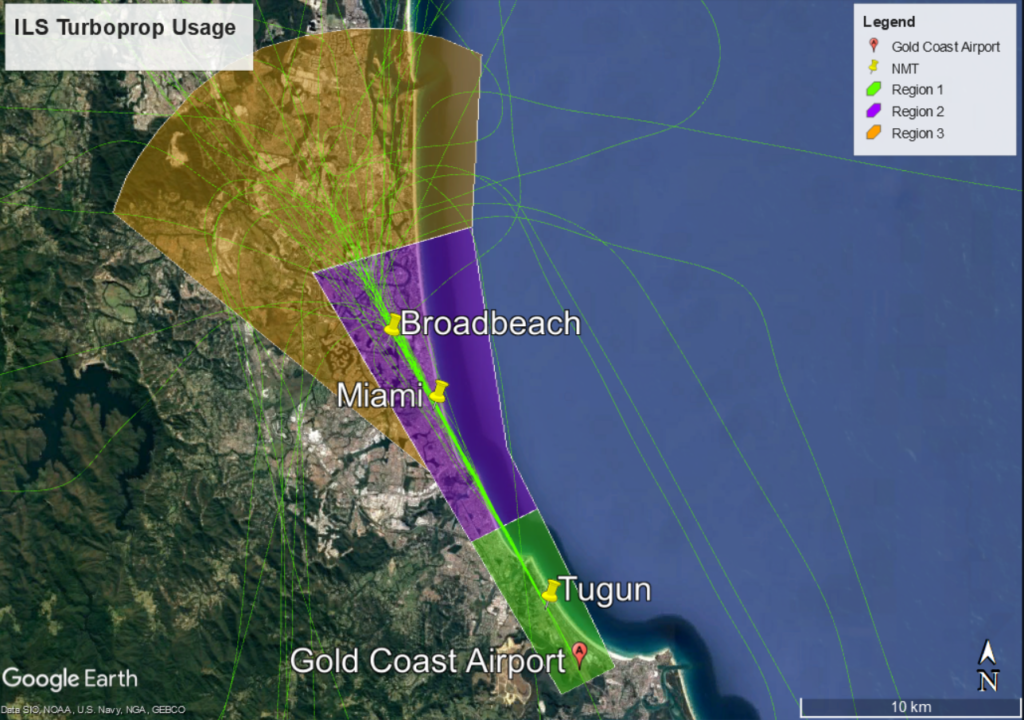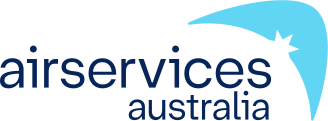The Instrument Landing System
What is an ILS?
An Instrument Landing System (ILS) is a navigational aid that emits radio signals to provide vertical and horizontal guidance to pilots landing in low-visibility and inclement weather conditions. This type of system requires a flight path that extends in a straight line from the runway.
Airports without an ILS can experience higher levels of missed approaches, unstable approaches and in some cases, diversions to alternate airports when safe landing is not possible.
The Gold Coast ILS
An ILS was introduced at Gold Coast Airport in early 2019. The below image shows the ILS flight path.
The ILS is designed so that arriving aircraft are vectored by Air Traffic Control within the triangular area between the dotted yellow lines (the ‘vectoring corridor’) to intercept the ‘straight-in’ ILS approach path (solid yellow lines).

Usage of the Gold Coast ILS
Analysis of flight tracks found that total ILS usage for a year (from February 2019 to February 2020) was 833 arrivals, which included 442 jet arrivals (53%) and 391 turbo prop/piston arrivals (47%). Turbo-props made up approximately 6% and piston aircraft approximately 41%. Piston aircraft are typically training aircraft under 5,700kg and therefore allowed to use the ILS under the NAPs (see NAPs section below).
On the busiest day of the year, the ILS was used 45 times. For the majority of the year (349 days), ILS usage was less than 8 arrivals per day.
Use of the ILS is seasonal due to weather patterns (e.g. storms and low visibility conditions). February 2020 was the most common month of usage, with 28% (235 arrivals) of all use occurring in this month. August 2019 was the least common month of usage with only 20 arrivals.

Jet aircraft are are broadly distributed (including those arriving from the south) as they approach to join the ILS. Once on the ILS their flight paths become increasingly concentrated.

Piston aircraft remain more broadly distributed than jet and turbo-prop aircraft before narrowing their approach closer to the airport.

Turbo-prop aircraft are broadly distributed as they approach to join the ILS. Once on the ILS their flight paths become increasingly concentrated.
Noise Abatement Procedures for the ILS
Noise Abatement Procedures (NAPs) at Gold Coast Airport restrict use of the ILS except in the following circumstances:
- when poor weather affects visibility
- for operational requirements,
- or during emergencies.
The objective of the NAPs it to limit the use of the ILS and minimise noise impacts on the community.
Weather
Weather conditions that affect visibility include low cloud and rain. When making an approach the pilot must be able to see the runway on reaching a prescribed altitude known as the “decision altitude”. If the pilot cannot see the runway by this point the landing will be aborted and a missed approach conducted. In a missed approach or “go-around” the pilot increases power, ascends and flies a circuit to prepare for a second approach. The decision altitude when using other approaches at Gold Coast Airport varies between 570 to 430 feet, while the decision altitude when using the ILS is reduced to 330 feet. Therefore the ILS provides more opportunity to land in poor visual conditions.
Air traffic control advise pilots to use the ILS when:
- the cloud base is at or below approximately 800 feet (244 metres), and/or
- the visibility from the air traffic control tower looking out along the ILS flight path is less than approximately 4 kilometres.
Visibility from the control tower is assessed with reference to geographical features at known distances. The ILS is nominated for use once the visibility of Tugun Hill from the tower is reduced due to weather. Tugun Hill is located 4 kilometres from the tower.
Operational requirements
The NAPs for the Preferred Approaches for Runway 14 require that the ILS be used as the last priority approach, except due to weather or operational requirement. The NAPs priority order is:
- ‘Smart Tracking’ (RNP-AR) approach
- Area Navigation (RNAV) approach or Visual approach
- Instrument Landing System (ILS) approach
If a pilot requests use of the ILS due to operational requirements, air traffic control (ATC) must follow this request. To ensure safe operation of their aircraft, the pilot-in-command always has the final say about what type of approach they require.
Training
The ILS can be used for training purposes, but:
- is not permitted for aircraft with a maximum take-off weight (MTOW) above 5,700kg
- is permitted for aircraft with a maximum take-off weight (MTOW) below 5,700kg (light aircraft) only between the hours of 9am and 5pm local time.
Compliance with ILS conditions of use
Of the 442 jet aircraft that arrived on the ILS (from February 2019 to February 2020), 90% used it when ATC had nominated it as the approach due to the cloud base and low visibility conditions outlined in the NAPs.
Approximately 10% of jets used the ILS approach when it was not nominated by ATC.
Reasons for this are:
- aircraft attempted to fly the RNP-AR or RNAV approach, and could not sight the runway at the required decision altitude so conducted a missed approach and were then directed by ATC to use the ILS approach due to visibility
- pilots advised of critical operational requirements due to on-board navigational equipment issues or emergencies
- airline crews prepared for approach using the ILS and either misunderstood the application of the NAPs, or were unfamiliar with operations at Gold Coast Airport.
The ILS was not used by jet or larger turbo-prop aircraft for training.
Analysis of overall arrivals to Runway 14 found that jet and turbo-prop aircraft are using preferred approaches in the order outlined in the NAPs:
- 48% used the RNP-AR procedures
- 17% used RNAV or Visual approaches
- 13% used the ILS approach procedure
Over 18% of general aviation flew visual or VOR approaches.
Gold Coast ILS Post Implementation Review
In 2020 we undertook a Post Implementation Review (PIR) of the Gold Coast ILS arrival procedures.
More information about the PIR can be found on Engage Airservices.


